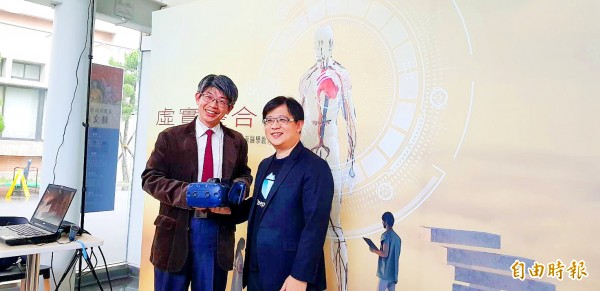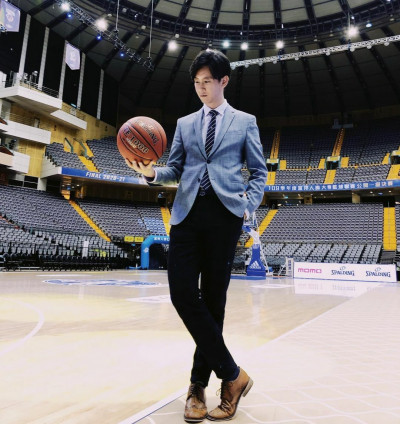《TAIPEI TIMES》 VR software to help Taipei med students explore human body

Taipei Medical University Anatomy Department professor Chang Hung-ming, left, stands beside a display for the university’s virtual reality anatomy software in Taipei yesterday. Photo: Wang Yi-hung, Taipei Times
By Rachel Lin and Sherry Hsiao / Staff reporter, with staff writer
Taipei Medical University (TMU) has created a classroom where medical students can use virtual reality (VR) technology to study human anatomy.
Ten headsets with 3D Organon VR Anatomy software have been installed inside the classroom, the school said on Nov. 29.
While cadaver dissections provide an irreplaceable learning experience, medical students can explore the human body in 3D using the VR headsets, Anatomy Department professor Chang Hung-ming (張宏名) said.
The software affords a clear 360-degree view of the skeleton, muscles, tissue, blood vessels, nerves and organs, helping students gain a more precise understanding of the structure of the human body, he said.
Anatomy is the foundation of medicine, and medical students must complete anatomy lessons before doing any clinical work, Chang said.
For more than a century, human anatomy has mostly been taught using two-dimensional materials, such as textbooks, computers and digital anatomy visualization tables, he said.
However, words and images cannot present a multidimensional perspective of real spaces, and students often have to rely on their own imaginations to try to piece together the blood vessels, nerves, organs and other human structures to establish how they relate to each other, he said.
That creates a learning obstacle, because it is difficult for students to confirm whether their ideas are correct, he added.
The number of donated cadavers is limited, and they cannot be used more than once, so the amount of time each student can spend learning about human anatomy by working with human bodies is relatively limited, which makes learning less effective, Chang said.
The headsets and the software can be used by 300 students at a time, he said, adding that the software displays more than 4,000 anatomical structures, as well as still and moving models of the human body, he said.
It allows users to see the contraction and relaxation of muscles, the beating of the heart, and even the opening and closing of the heart valves, he said.
The anatomy department also plans to introduce its VR teaching plan to the university’s continuing education and Executive Master of Business Administration programs, as well as the summer camps it offers to elementary, junior-high and high school students, to enable more students to experience human anatomy through VR technology, the university said.
新聞來源:TAIPEI TIMES















